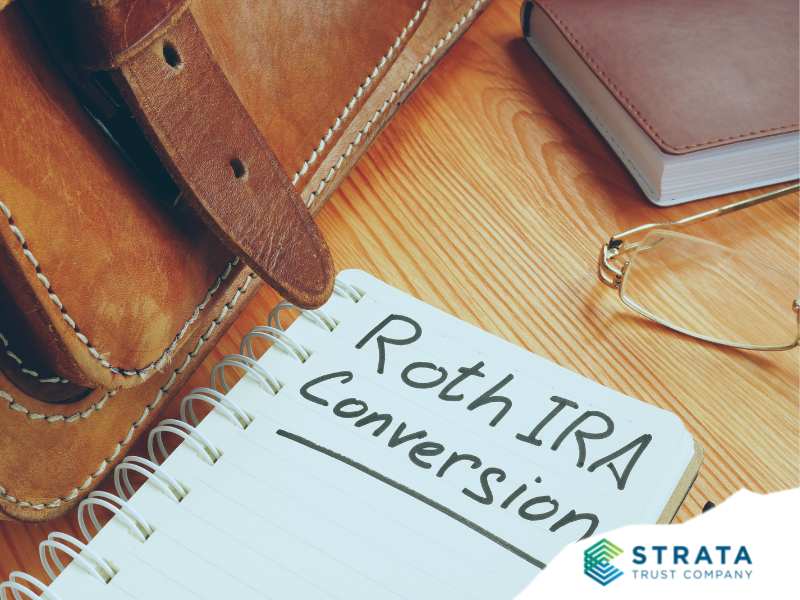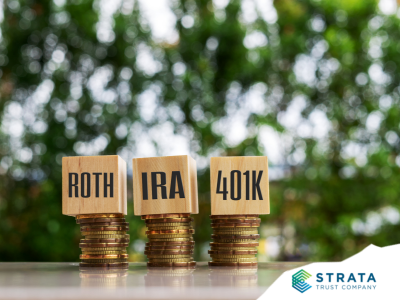Roth conversions have been a hot topic lately. Are they a tool for retirement income planning, or a tax revenue tool for Congress? As it turns out, they’re both. Here are some legislative and market events affecting Roth accounts recently, and what you should know before you consider a Roth conversion.
Why Convert to a Roth IRA?
The benefits of a Roth IRA include having the option to take tax-free withdrawals of your contributions at any time and tax-free investment growth if you wait until at least age 59½ to withdraw the earnings from your Roth IRA. To help boost Roth IRA balances — and generate tax revenue — Roth IRA owners are allowed to convert their existing Traditional and SIMPLE IRA assets to a Roth IRA. Those who are eligible to take a distribution from their workplace retirement plan may also convert those pre-tax assets to a Roth IRA. The amount converted (excluding any basis) is taxable to the IRA owner in the year it was distributed from the original retirement account. But once in the Roth IRA, the converted amount and any investment growth can be withdrawn tax-free in retirement.
Who Converts to Roth IRAs?
Young retirement savers are often good candidates for Roth IRA contributions and conversions because their income and tax bracket may be lower (making a deductible IRA contribution less valuable), and they have many years to allow their Roth IRA assets to grow tax-free. Roth IRA conversions also may be appealing to individuals who want to pay tax on their retirement savings now, so they have tax-free income in retirement. Another incentive for contributing or converting to a Roth IRA is that Roth IRAs are not subject to required minimum distributions (RMDs) during the IRA owner’s lifetime, which makes them a valuable tool for leaving tax-free assets to heirs. For individuals whose income exceeds the limit for being eligible to contribute to a Roth IRA, conversions provide a “backdoor” into a Roth IRA. One strategy is to make nondeductible contributions to a Traditional IRA, then convert those assets to a Roth IRA.
Are Conversions Being Eliminated?
In late 2021, Congress proposed eliminating this backdoor Roth IRA strategy to close the “tax loophole” for high earners and to generate tax revenue to pay for law changes contained in the Build Back Better Act. The Build Back Better Act would have eliminated conversions of after-tax retirement savings to Roth IRAs as early as 2022, as well as prohibited high earners from making any conversions, beginning in 2032. This threat prompted some financial professionals to suggest their clients make conversions before the end of 2021. However, the Build Back Better Act proposal died in the Senate and never became law.
The Inflation Reduction Act of 2022 is Congress’s follow-up to the Build Back Better Act. It focuses on reducing the deficit, investing in domestic energy and manufacturing, reducing carbon emissions, and lowering prescription drug prices – but it does not include any provisions that would affect retirement savings.
Circumstances for Conversions in 2022
Although no longer at risk of being eliminated in 2022, Roth conversions remain a hot topic because the economic and market conditions have made it appealing for some IRA owners to make taxable conversions this year. For example, those who were financially affected by the pandemic, resigned from their job, or retired could have lower than usual income or tax liabilities this year. A lower tax bracket can reduce the tax cost of a conversion. Another event that may trigger conversions is when the value of an investment in a Traditional IRA drops significantly, which can happen in a volatile market. If an IRA owner makes a taxable conversion when the investment value is low, the tax liability is reduced. After the conversion, any gain in investment value will be tax-free in the Roth IRA.
The Future of Roth IRAs
Some retirement savers worry about the tax benefits of Roth IRAs being eliminated with future law changes. While that’s possible, Congress has once again turned to Roth accounts as a revenue generator this year and has proposed legislation that would drive more savings into Roth accounts. Three bills currently being considered in Congress, collectively referred to as SECURE Act 2.0, would make the following changes affecting Roth accounts:
- Increase the catch-up contribution limit for certain age participants in 401(k), 403(b), and governmental 457(b) plans and require the additional amounts be Roth contributions
- Increase the catch-up contribution limits for Roth, Traditional, and SIMPLE IRAs
- Allow SEP and SIMPLE IRAs to be designated as Roth IRAs
- Allow 401(k), 403(b), and governmental 457(b) plans to permit employees to designate employer matching contributions as Roth contributions
- Eliminate the RMD requirement for designated Roth accounts in 401(k), 403(b), and governmental 457(b) plans
Capitol Hill watchers are predicting that Congress will pass the SECURE Act 2.0 legislation late this year.
More Resources
If you’re thinking about a Roth conversion, talk to your financial advisor and/or accountant to make sure you understand the tax consequences and how it affects your retirement income goals.
Our library of financial calculators can be beneficial when weighing the options for your retirement savings. To compare a Roth to an ordinary taxable investment and see the advantages, if any, of converting your IRA to a Roth, try our Roth IRA and Roth IRA Conversion calculators. Information on requesting a conversion to your Roth IRA can be found on our FAQ page.
For questions or next steps, contact our self-directed IRA experts.
















